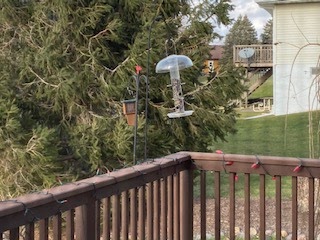Yes, Acadiana is part of the U.S.
The Bakers in Mandalay National Wildlife Refuge, hear Houma, La.
The Terrebonne Water Museum, above; and also a wildflower and an Ibis in the water refuge.
It was first heard on the television news one night, during the weather report:
"We in Acadiana can expect highs in the 70's tomorrow," the forecaster said. "Acadiana?" What was this guy talking about?
We were on vacation to explore Louisiana: Turns out, the name "Acadiana" describes both a region and the people living there, "Acadians."
We'd been to Louisiana before, mainly to New Orleans. This trip was to focus on the southern and western areas of this beautiful part of America. Acadiana was founded by Acadians who had roots in France and settled in Canada but were expelled in the 1700s. Part of the population was invited to live in Louisiana by the Spanish government, in control at that time. These folks and the native population intermarried. They are called Acadians and Cajuns; an estimated 815,000 are living today in the state.
The Cajun style of cooking is found in this region and the people are said to have a different dialect, but we understood everyone we met.
Acadiana provided a wonderful experience; both visually and through the food. We ate, generally, two meals in local restaurants each day, trying various types of seafood. My husband took a liking to crawfish etoufee, and I loved the fresh shrimp, in almost any type of dish.
Visually we were struck by the water, found in bayous, lakes and Gulf of Mexico. In addition to water there are mass amounts of green trees lining the roads, even the interstate highways.
We spent a week in Houma, La., which is a good-sized town in the heart of the Cajun region. One favorite pastime is walking in beautiful vacation areas, and our first was the Mandalay National Wildlife Refuge where we trekked a one-mile path.
The Mandalay National Wildlife Refush measures 4,212 acres, and is composed of both freshwater marsh and cypress swamp. According to tourist information, "Houma's Wild Side," the refuge provides habitat for water fowl, wading birds and neo-tropical birds. In late March we were a few weeks ahead of the migration, but we did spot an Ibis, and assorted song birds.
After the hike we lunched at a Creole restaurant in downtown Houma, and then walked to the revalatory Terrebonne Water Musuem. It provided an overview on the residents' relationship to water, from the wide-spread fishing industry, to flooding and damage that occurs from tornadoes. The interactive format allows visitors to explore the impact of big hurricanes on the region and explains the local economic relationship to seafood, water and power industries.
The next day our SUV went on the blink, and we used a concierge service to watch NCAA games involving both the University of Iowa and Iowa State University. More on this vacation to come ...








Comments
Post a Comment